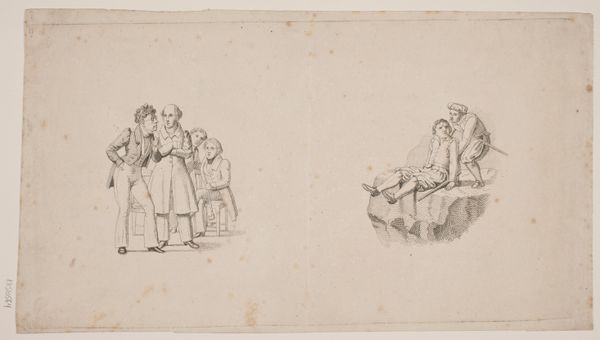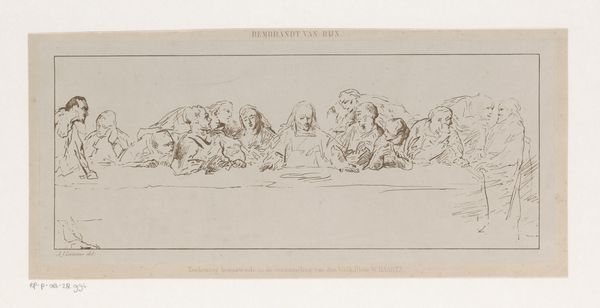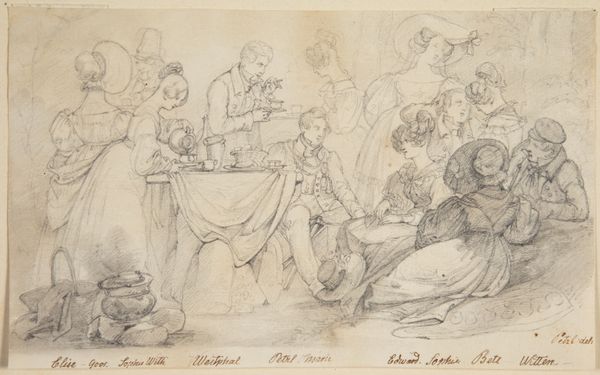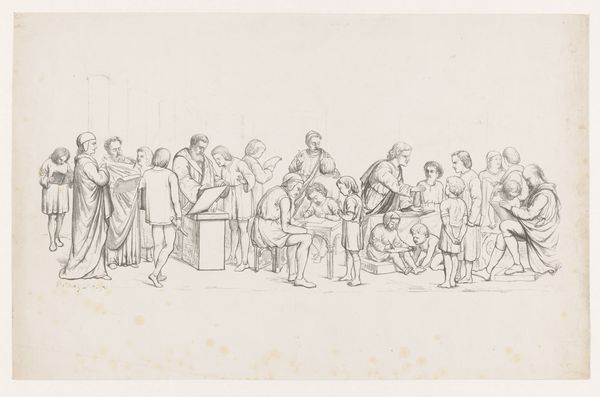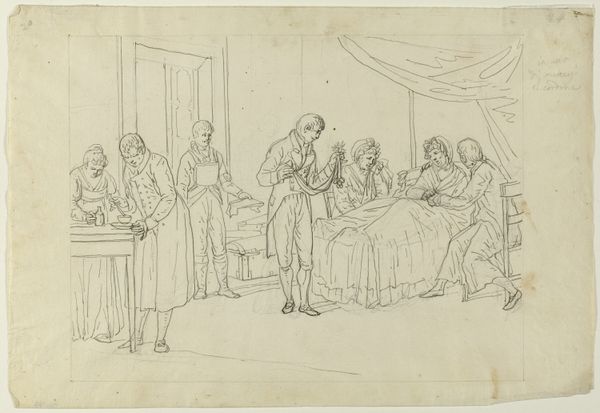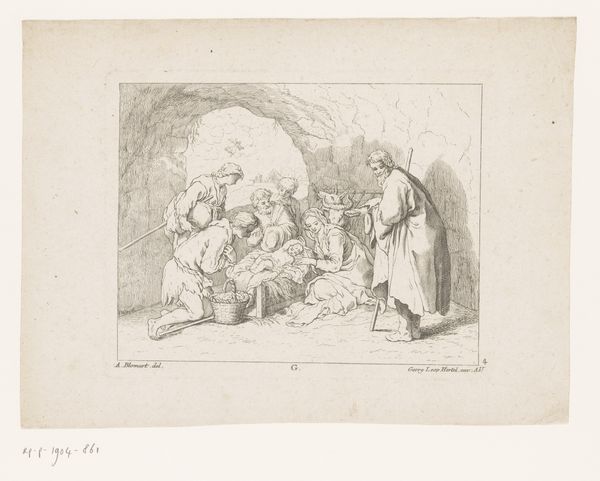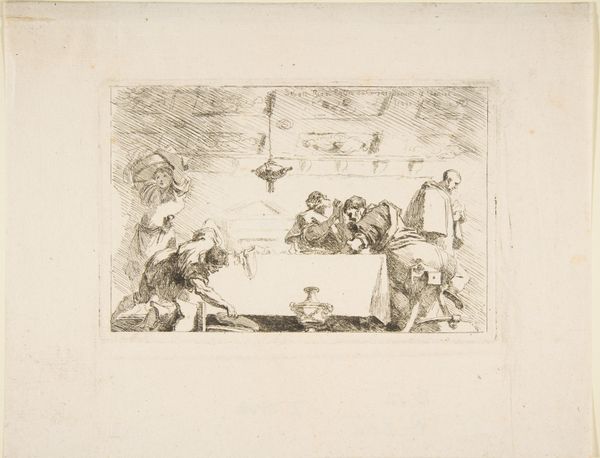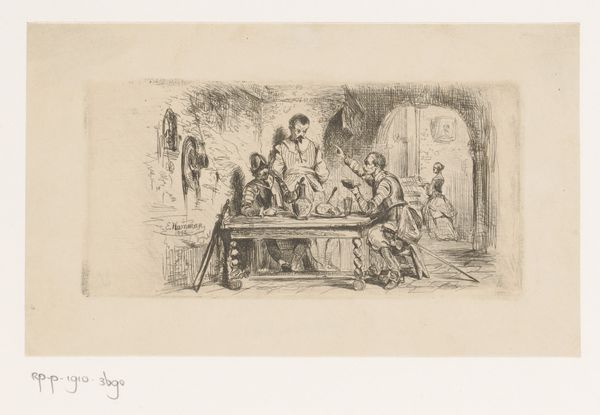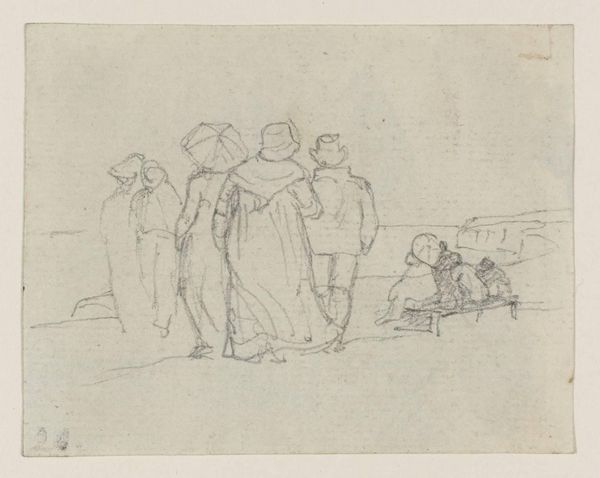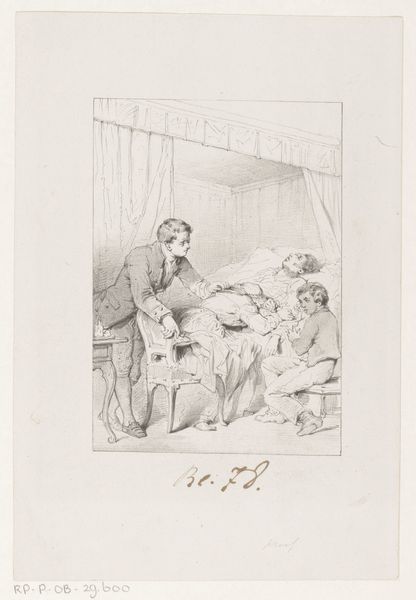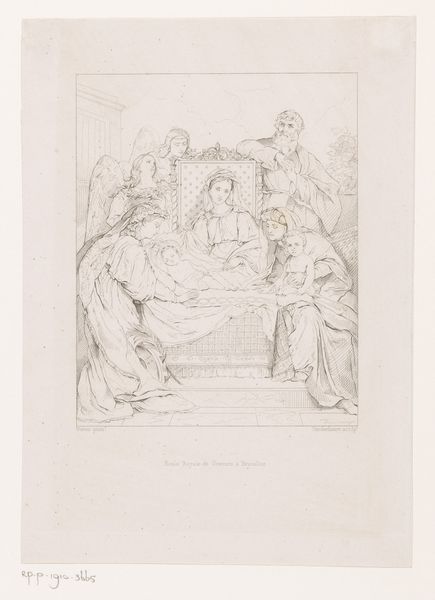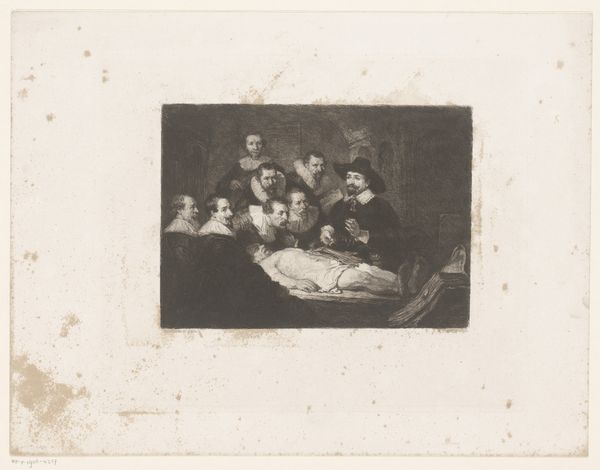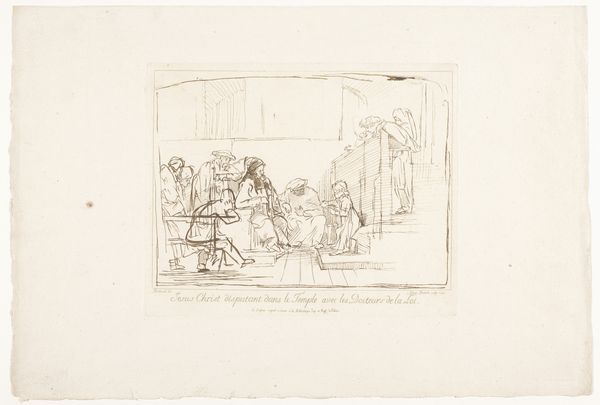
drawing, pencil
#
drawing
#
pencil
#
genre-painting
#
history-painting
Dimensions: height 228 mm, width 315 mm
Copyright: Rijks Museum: Open Domain
Curator: Here we have "A Section in the First Chamber, 1887," a pencil drawing by Johan Michaël Schmidt Crans. Editor: My first impression is one of subdued power. It feels like observing a moment of significant decision-making. The somber quality is striking, even though it's "just" a sketch. Curator: Indeed. Consider this as a fragment of history visualized. The drawing likely captures a session of the First Chamber, which then—as now—functioned as the upper house of the Dutch parliament. Examining the political context is key; this period saw shifts in power and ongoing debates about suffrage. Editor: It's fascinating to see such a historical event rendered in pencil. I'm struck by how the material of pencil creates an immediacy, bringing the weight of those debates into sharp relief. Who are these figures? Curator: Likely influential politicians of the time, deeply entrenched in a system with significant implications for social mobility. It portrays them as they navigated, resisted, or contributed to transformations impacting Dutch society, shaped by class, gender and race dynamics. Editor: It raises interesting questions about production too. This is, in essence, a relatively accessible medium for capturing and disseminating a critical social situation, making tangible the work that’s normally conducted behind closed doors. Was the intention simply documentary, or something more pointed? Curator: The artist’s choice to represent them as part of a genre and history painting can be interpreted as the intent to portray them from a historical perspective as important actors during the development of Dutch modern history. What remains unwritten—and crucially visualized here through the choice of characters represented—suggests more than what's visible in parliamentary records. Editor: Absolutely, that's insightful. I wonder about the availability of such images too. It must have had a certain weight. Curator: It likely served as a record, an insight into the workings of power for the people but perhaps also as a marker for those excluded or marginalized, a potent symbol of both exclusion and participation. Editor: And that speaks to how something so seemingly simple can embody layers of complex meaning related to labor, influence, and who gets represented. Curator: Agreed. The drawing serves as a powerful visual testament. Editor: A potent reminder to reconsider materials.
Comments
No comments
Be the first to comment and join the conversation on the ultimate creative platform.
